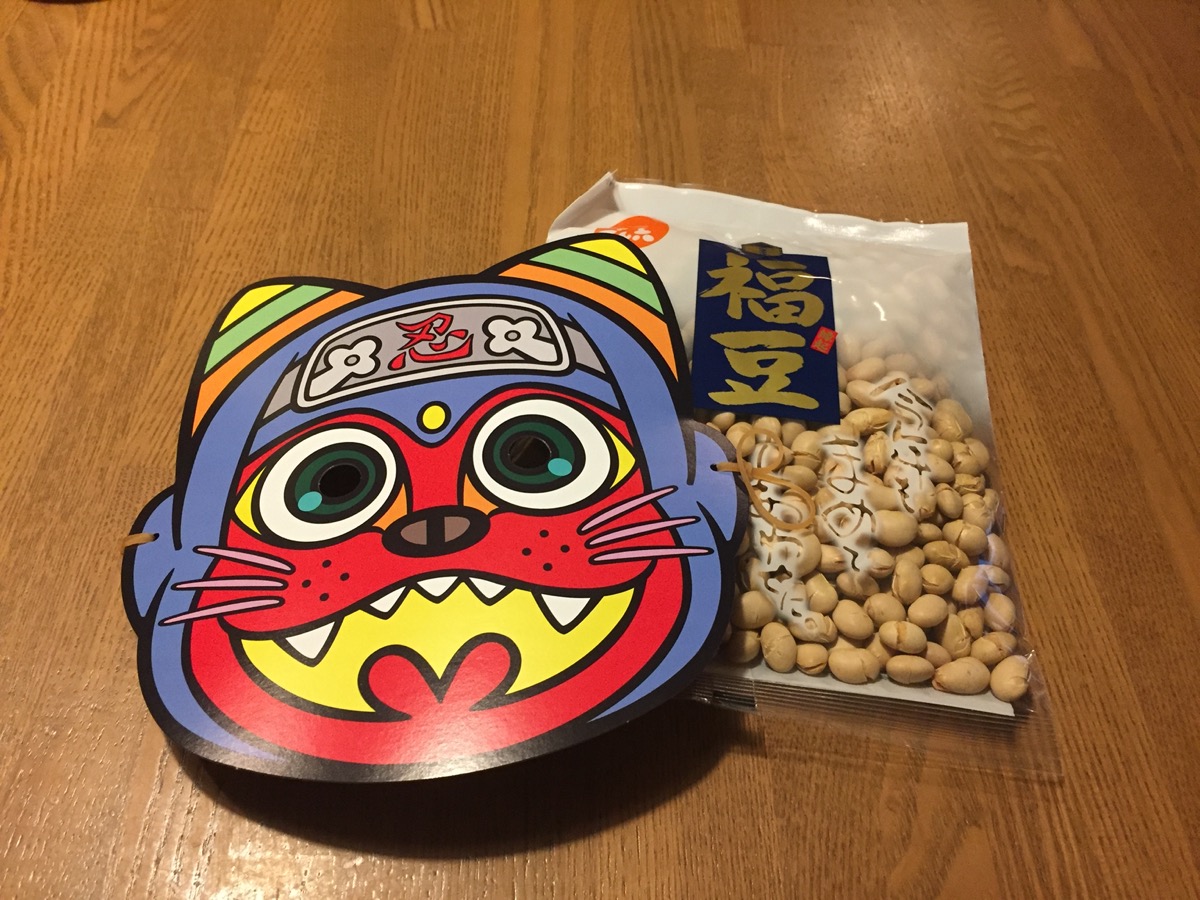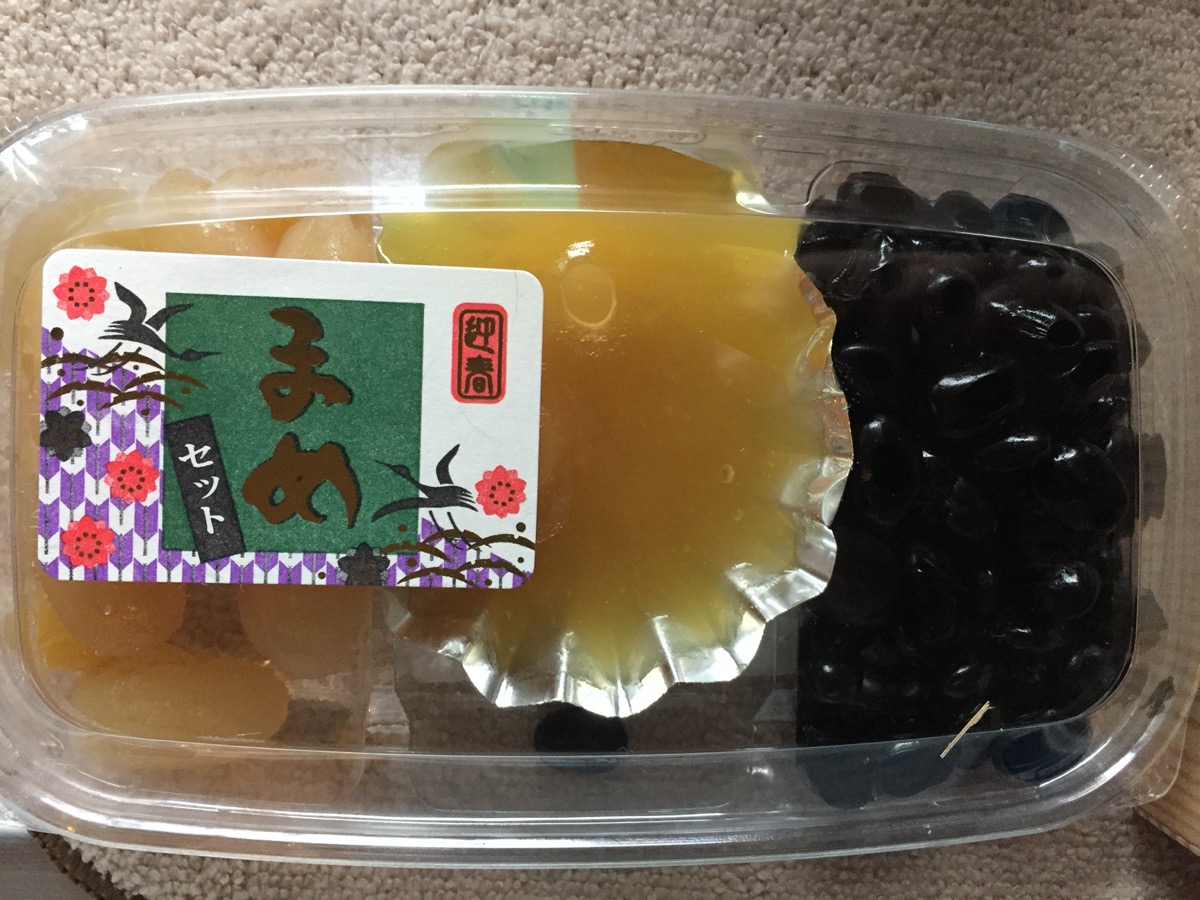豆 mame means “bean.”
There are many types of beans that you can find here in Okinawa and Japan. Listed below are a few common examples (but by no means an exhaustive list, there are other varieties available).
枝豆 edamame: soybeans. Of course these can also be dried, or used to make things like tofu and soymilk.
小豆 azuki: red beans, often turned into a paste called 餡子 anko and used in Japanese sweets.
黒豆 kuromame: black soy beans
納豆 natto: fermented, slimey and somewhat smelly beans. A typical breakfast item eaten with rice, or sometimes found in a maki sushi roll. Most people either love it or hate it, but it is supposed to be really healthy. By the way, my (American) husband loves it… he can be strange. There is even a variety for “kodomo natto” こども納豆 (children’s natto) that is more mild if you want to give it a chance, this might me your best bet.
うずら豆 uzura mame: mottled beans similar to pinto, named because they resemble quail eggs with the mottled color.
Beans seem to be incredibly prevalent in Japanese and Okinawan culture, whether eating beans for good luck or good health, or using them for warding of evil or scaring away demons, beans seem to have some mystical property. Setsubun 節分, bean-scattering festival, is one such example in February.

In Okinawa, there is also the tradition of eating a special mochi covered in beans called fuchagi ふちゃぎ during Autumn as way to ward off evil.
It is typical to eat sekihan 赤飯 (literally “red rice”) during Shinto rituals throughout the year; it is mochigome (mochi rice) mixed with red azuki beans (recipe for a version of kowameshi similar to sekihan here). The color red is a symbol of happiness and celebration.
On New Years, some of the lucky foods in osechi-ryouri おせち料理 are cooked sweetened beans, such as kuromame; in Japanese “mame” also sounds like the word for “hard work and good health,” so eating this during New Years is a symbol of good health for the upcoming year.

My husband pointed out to me that sweetened beans found in many Japanese desserts and sweets are unusual for many Americans. I found this odd since I really like them and never considered this to be a strange idea; red bean desserts can be found easily in Hawaii. He said that it has something to do with the texture, but I am uncertain. Living in Okinawa has increased my love for beans even more, I think.